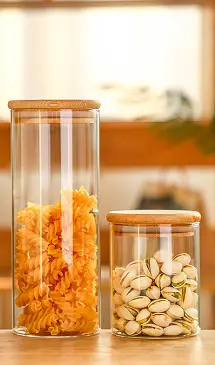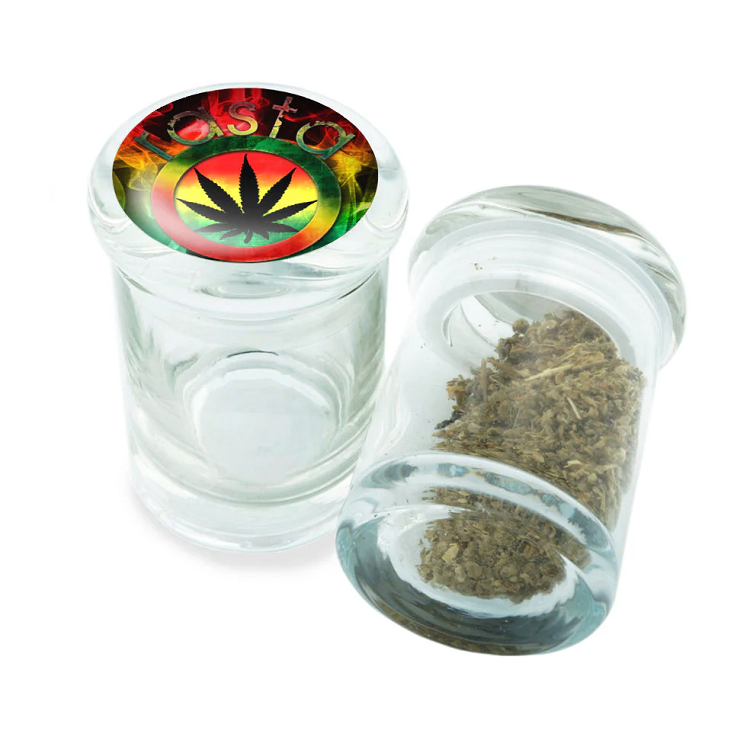How to Sterilize Canning Jars: A Comprehensive Guide to Safe and Successful Canning
02-21-2025
Are you new to home canning and wondering the way to sterilize canning jars? Or maybe you've been canning for years but want to make sure you're doing it right? This guide provides a comprehensive overview of how to sterilize jars, covering everything from the basics of sterilizing mason jars to dealing with different altitude levels. Knowing how to sterilize jars is the first step to preserving food safely and effectively. This article is worth reading because it provides clear, step-by-step instructions, addresses common concerns, and offers tips to ensure your sterilized glass jars are ready for their delicious contents.
Do I Need to Sterilize My Canning Jars?
This is the first question many home canners ask. The answer depends on the processing time of your canning recipe. Sterilizing jars is crucial for any canning recipe calls for processing time of more than 10 minutes. This is because some spores of bacteria, like Clostridium botulinum, can survive at temperatures below boiling. Sterilizing removes these potential contaminants. For recipes with processing times under 10 minutes, you can often skip the extra step of sterilizing and just clean jars very well.
Sterilize the jars, if you're canning recipes with hot food, like pickles or relishes, this sterilizing step is essential. This will help guarantee that food is safe and will last for as long as it should.
What is Sterilization?
Sterilization is the process of killing bacteria, viruses, and other microorganisms that can spoil food or cause illness. In the context of canning, sterilization aims to create a sterile environment inside the glass jar, ensuring that your preserved food is safe to eat and can be stored for an extended period. It is key to consider, that there are different levels of cleanliness, and sterilization represents the highest level.
When we talk about sterilizing jars, we're mainly talking about killing bacteria like Clostridium botulinum, which produces a dangerous toxin. This is why understanding how to sterilize jars and following the correct procedures are essential for safe home canning.
Way to Sterilize Jars: Boiling Water Method
The boiling water method is the most common and often the easiest way to sterilize canning jars, especially if you're new to canning. Here's how it works:
- Prepare your supplies: You'll need a canner (or a large pot), jar lifter, boiling water, jar lids, and rings.
- Fill the pot: Fill the pot with enough boiling water so the jars will be completely submerged, with at least two inches taller than the jars.
- Boil the jars: Place the glass jars in the boiling water. Make sure there's enough space between the jars for the boiling water to circulate.
- Boil the jars for 10 minutes: Boiling water needs to reach water boils before timing starts. If you live at a higher altitude, add one additional minute of boiling time for every 1,000 feet above sea level.
- Remove and drain: Using the jar lifter, carefully remove the hot jars from the boiling water and place them on a clean, dry dish towel. Keep the jars warm until you are ready to fill them.
Here is how Allen, a factory owner from China who manufactures glass jars, addresses quality assurance for his customers: "We implement stringent quality control measures throughout our production process. Our glass jars undergo rigorous testing to ensure they are durable, leak-proof, and compliant with international safety standards. We prioritize our customers' safety and satisfaction, and every jar is made to meet or exceed those requirements."
The Oven Method for Sterilizing Jars
The oven method is another effective way to sterilize jars, especially if you want to sterilize a large batch at once. Here's how it works:
- Preheat the oven: Preheat your oven to 200°F (93°C).
- Wash and rinse: Wash your glass jars with hot soapy water and rinse them well.
- Place the jars: Place the jars on a baking sheet in the oven. Ensure the jars are dry.
- Heat the jars: Heat the jars in the oven for at least 20 minutes.
- Keep warm: Keep the jars in the oven until you are ready to fill them. Be careful when handling hot jars.
The oven method is great if your recipe requires processing times of less than 10 minutes. The jars will remain warm and sterile until you are ready to fill them with your hot food.

Can I Use the Dishwasher to Sterilize Jars?
Yes, you can use the dishwasher to sterilize jars, but it's not always the most reliable method.
- Set your dishwasher: Run your dishwasher on its hottest setting and make sure you have a "sanitize" or "sterilize" option, if available.
- Wait: Allow the jars to cool slightly so you can safely handle them.
- Use quickly: Immediately fill the jars after washing them in the dishwasher.
The problem with using the dishwasher for sterilization is that it doesn't always reach the temperatures needed to kill all microorganisms. Additionally, if your canning recipe requires a processing time of more than 10 minutes, you need to consider the time between the dishwasher cycle and filling the jars with hot food. If the jars cool down too much, they may not be sterile anymore.
How Long Should I Boil the Jars for Sterilization?
The time is 10 minutes. If you live at a higher altitude, you'll need to adjust the processing time. The boiling water method to sterilize must be completed within this time. Boil the jars for ten minutes unless you're at an altitude higher than 1,000 feet above sea level, in which case you will need to add one additional minute for every 1,000 feet.
This ten-minute duration ensures that any potential contaminants are killed. It's important to start counting the time once the water boils – not before. Also, always ensure your jars are fully submerged in the boiling water during this period. This is vital for effective sterilization.
What About Lids and Rings?
While the jars themselves can be sterilized using the boiling water or oven method, canning lids and rings require different treatment.
- Lids: Canning lids should be pre-treated by simmering them in boiling water for a few minutes. This process softens the sealing compound and ensures a good seal.
- Rings: Rings do not need to be sterilized, but they should be cleaned with hot soapy water. You don't want any debris on them.
- Don't boil lids: Don't boil the jars.
Here is a quote from a food writer about the importance of the seal: "The seal is what makes canning safe. If the seal is not perfect, you're at risk of bacterial contamination and spoilage."
Sterilizing Jars at Altitude
If you live at a higher altitude, the boiling point of water is lower. This means the temperature isn't as high, which is why you need to add one additional minute of processing time for every 1,000 feet above sea level. For example:
- At 1,000 feet: Add one additional minute to the sterilization time.
- At 2,000 feet: Add two additional minutes to the sterilization time.
- And so on.
Always check your recipe, too, as the processing time for the food being canned will also need to be adjusted based on your altitude. This step is critical for ensuring safe and successful canning

Dealing with Hot Jars and Hot Food
When dealing with hot jars, it's important to:
- Use tongs or jar lifter: These tools are made for handling hot jars safely.
- Place the jars on a clean, dry dish towel: This will prevent them from breaking if they come into contact with a cold surface.
- Fill the jars with hot food: Do this as quickly as possible after sterilizing to prevent contamination.
- Water should be one inch over the tops: In the canner when processing.
Remember that both the jars and the food need to be at the right temperature when you combine them, so that a vacuum can create the proper seal.
What to Do After You Sterilize Jars
Once you have sterilized your jars, and the time is up, you need to do the following:
- Remove the jars: Carefully lift the jars from the boiling water using a jar lifter.
- Place the jars: Set the jars on a clean towel-lined surface to prevent breakage.
- Fill the jars: Fill the jars with your hot food, following your recipe instructions.
- Wipe the rims: After filling, wipe the rims of the jars with a clean, damp cloth to remove any food residue.
- Add lids and rings: Place the canning lids on top of the jars and screw on the rings to fingertip tightness.
- Process the jars: Place the filled jars in your canner for the time specified in your recipe.
- Remove and cool: After processing, carefully remove the jars from the canner and place them on a towel-lined surface. Let the jars cool completely.
Summary of Key Points
- Sterilize jars properly: Ensure you follow the correct sterilization method, whether it's the boiling water method, oven method, or using a dishwasher.
- Adjust sterilization time for altitude: Increase sterilization time if you live at a higher altitude.
- Handle hot jars with care: Use a jar lifter to handle hot jars safely.
- Prepare lids and rings: Simmer canning lids to soften the sealing compound. Clean rings with hot soapy water.
- Fill the hot jars: Fill the hot jars immediately after sterilization with your hot food.
- Make sure jars are clean: Before you start canning, clean jars well, especially for home canning.
- Follow recipe instructions: Always follow the canning recipe and processing times for safe and successful canning.
- Make sure jars seal: After processing, check the seals of the jars. The lids should be concave, and you shouldn't be able to press them down.
- Store the jars properly: Once the jars have cooled, label and store them in a cool, dark place.
By following these guidelines, you can ensure that your home-canned goods are safe, delicious, and last for a long time.








